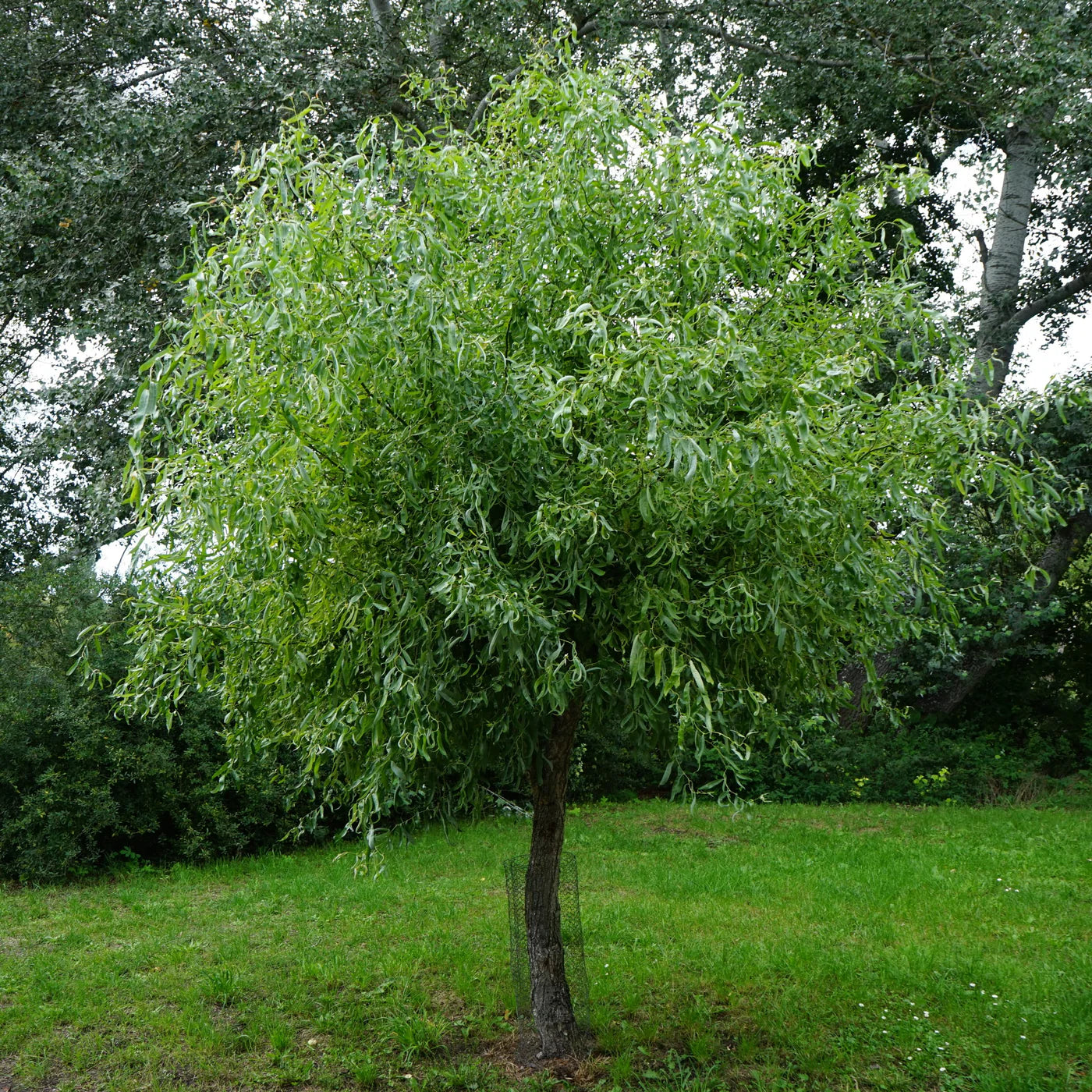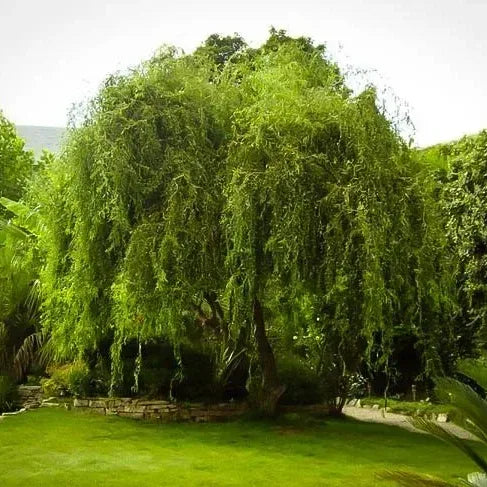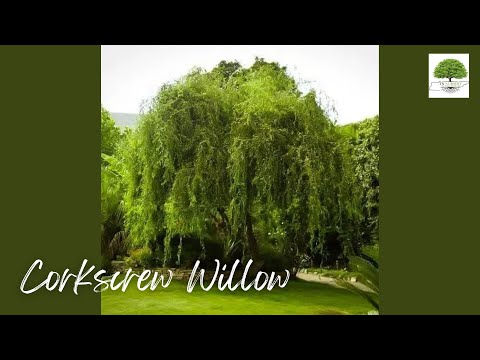Corkscrew Willow Trees for Sale
The Corkscrew Willow Tree is a wonderful tree whose long, sweeping foliage creates our classic “weeping willow” look that everyone enjoys. However, it gets its name ‘corkscrew’ from its curly leaves and similarly curly branches – a very unique phenomenon! The branches curve horizontally and fork vertically, which gives it a distinct look sure to be a great centerpiece in your garden scape.
Corkscrew Willow Plant Details
Family: Salicaceae
Light Requirement: Full sun
Water Needs: Moderate
Height: 30-40 ft
Spread: 15-20 ft
Growth Rate: Rapid
Soil Preference: Moist
Season of Interest: Spring
Flower Color: Yellow-green
Fruit: Brown seed pods
Wildlife Value: Habitat for birds and small mammals, soil stabilizer in wet areas
Notable Characteristics of Corkscrew Willow Tree
The Corkscrew Willow is easily identifiable by its curved branches and leaves. The contortion increases with vigor so the common practice of pollarding, which is when trees are pruned back to the main trunk to encourage new growth, often causes it to curl even more dramatically.
The wood is famously soft and flexible, making it good for basket weaving as well as for furniture and other carpentry. Similarly, the bark is thin and delicate. The tree has long, thin branches that hang low to the ground, drooping over themselves shortly after they leave the main trunk. Its muted green leaves are similarly drooping, as they are oblong and thin, helping them fall easily to the ground even in their semi-curly state.
Landscape and Maintenance of Corkscrew Willow Tree
This weeping tree is an east asian native, specifically China and Korea. The plant was first introduced to the United States in the early 1900s, and has since become naturalized in many areas. The tree is more drought tolerant than other willow varieties, helping it survive in more varied climatic environments across the United States.
The Corkscrew Willow has year round interest, sprouting inconspicuous yellow-green flowers in the spring and large yellow-brown seed pods in summer. In the fall and winter, the curly leaves fall off to reveal the even curlier woodwork beneath, making it a mysterious and haunting winter specimen for your garden.
We create with intention. Our products solve real problems with clean design and honest materials.
Exposure
Corkscrew Willow thrives best in total sun to a bit of shade, needing at least 4-6 hours of natural sunlight daily for optimal growth. In shadier conditions, its twisted branches may develop less prominently.
Height at Maturity
Over 25 Feet
Usage
Shade
Shipped As
Bare-root
Ships
UPS
Planting Zones
4-8
How To Grow & Care Tips
How to Grow and Care for Bare Root Trees
Bare root trees are shipped dormant without soil, making them lightweight, cost-effective, and easy to plant during the cool months of early spring or fall. To begin, soak the roots in a bucket of water for 4–6 hours before planting to rehydrate them. Choose a sunny location with well-draining soil and ample space for the tree’s mature size.
Dig a hole twice as wide as the spread of the roots and deep enough to keep the root flare (where the roots begin to spread from the trunk) at or slightly above ground level. Create a small mound of soil in the center of the hole, spread the roots evenly over it, backfill with native soil, and gently tamp down to remove air pockets. Water thoroughly after planting.
Keep the soil consistently moist (not soggy) during the first growing season, and apply mulch around the base—avoiding direct contact with the trunk—to conserve moisture and suppress weeds. Stake the tree if necessary, and prune only to remove dead or damaged branches. With proper care, your bare root tree will establish quickly and grow strong for years to come.


